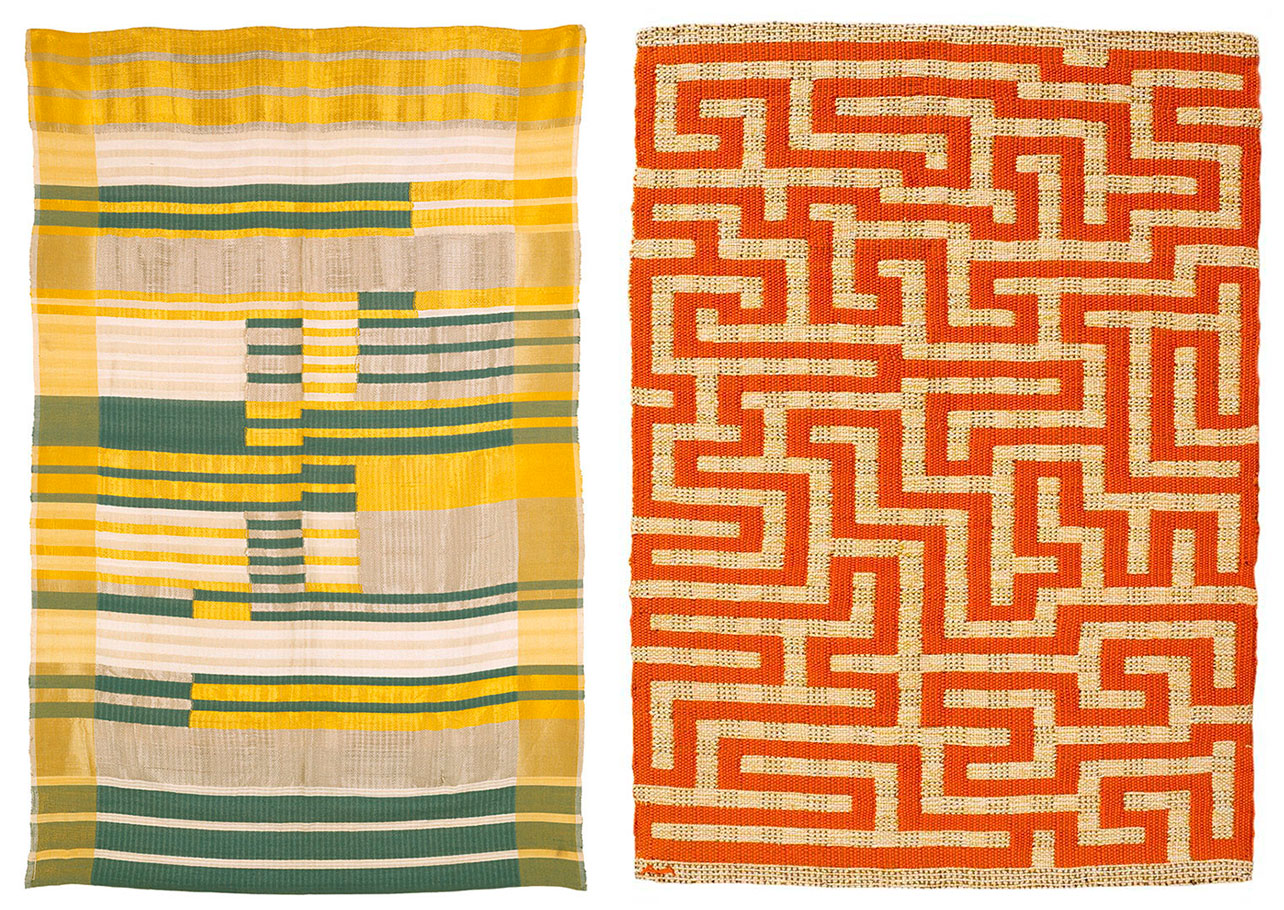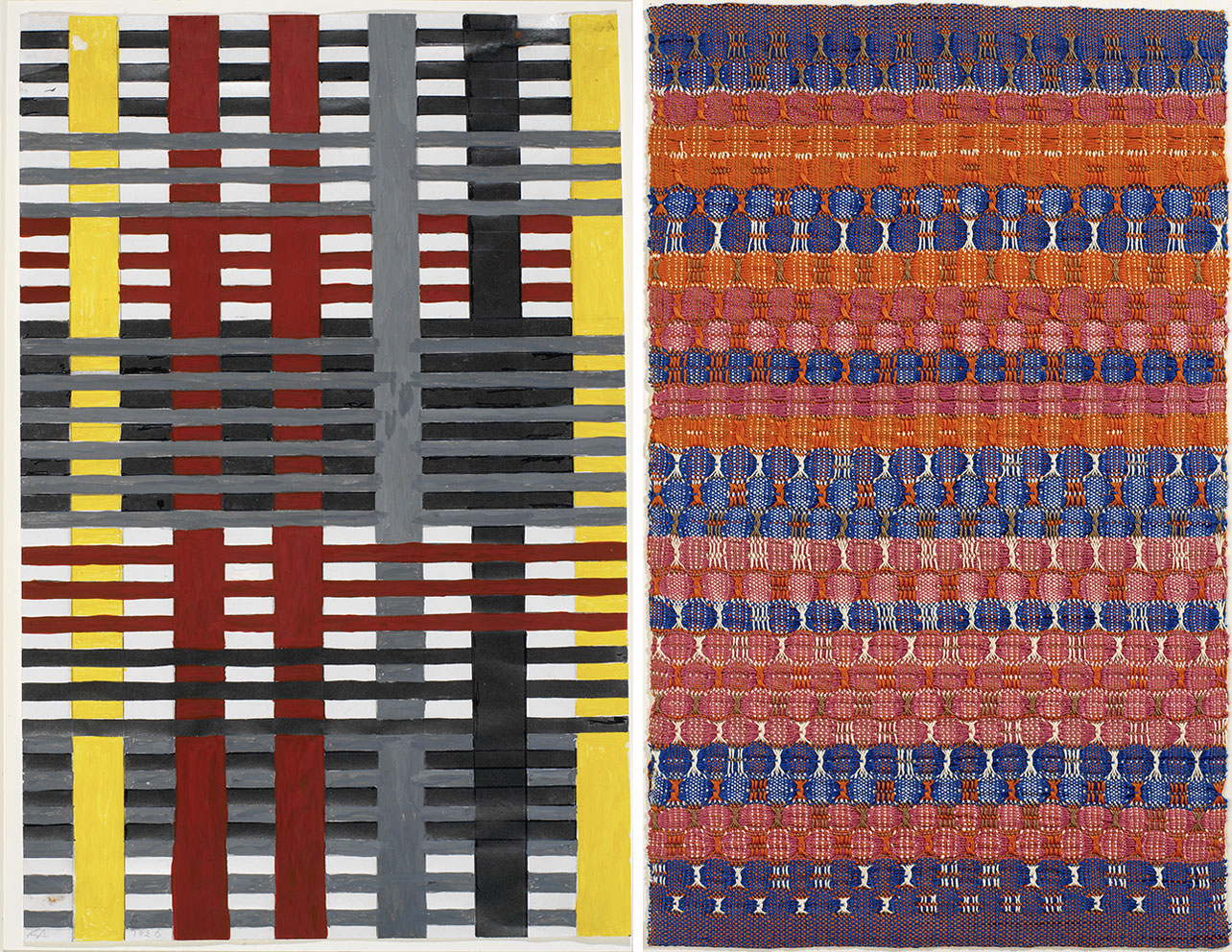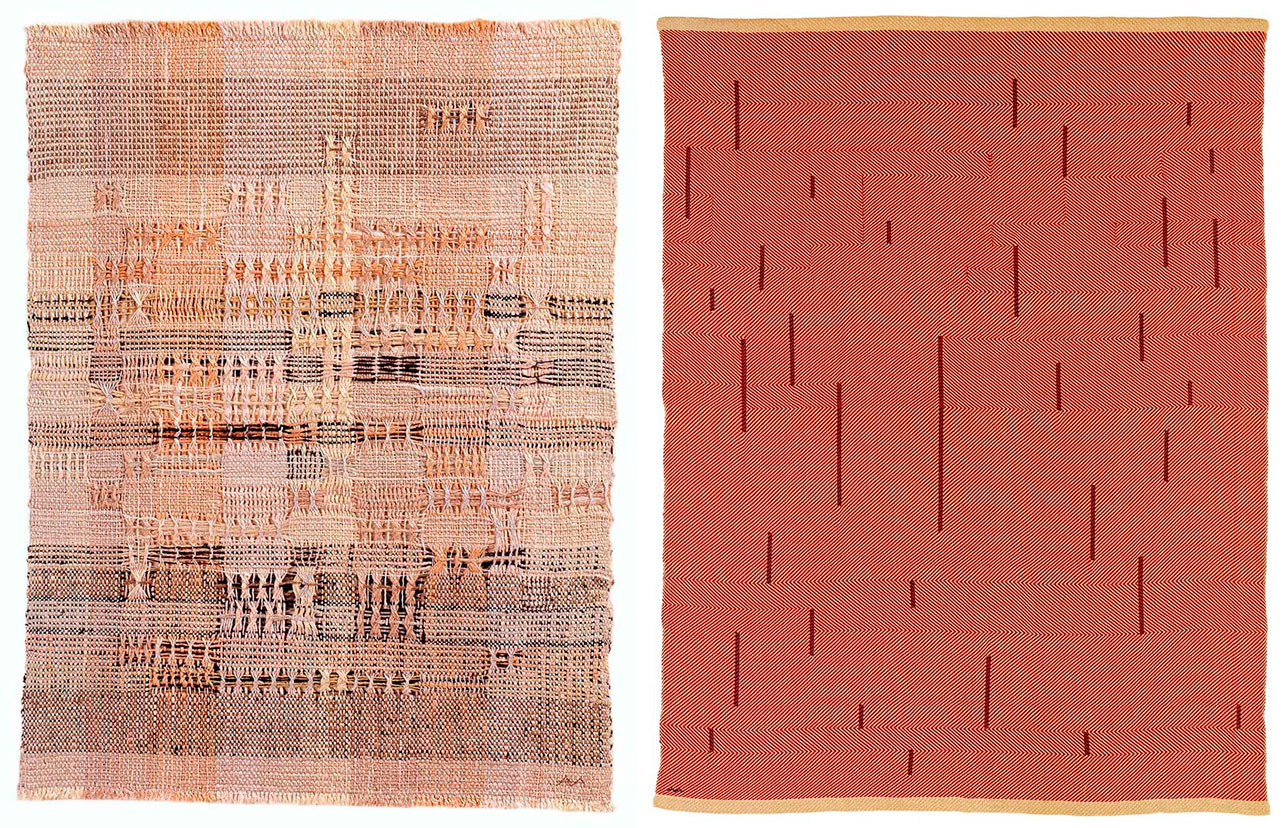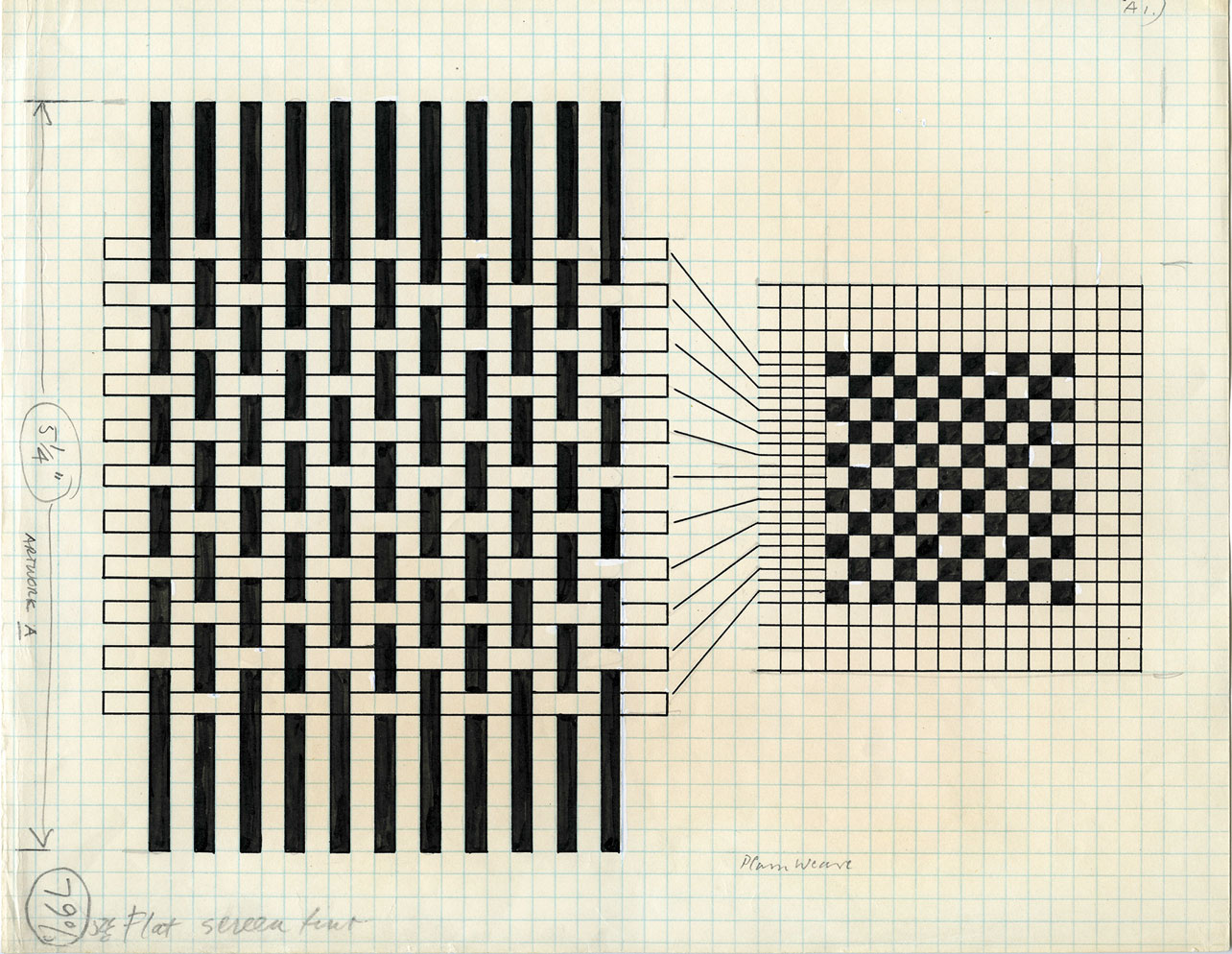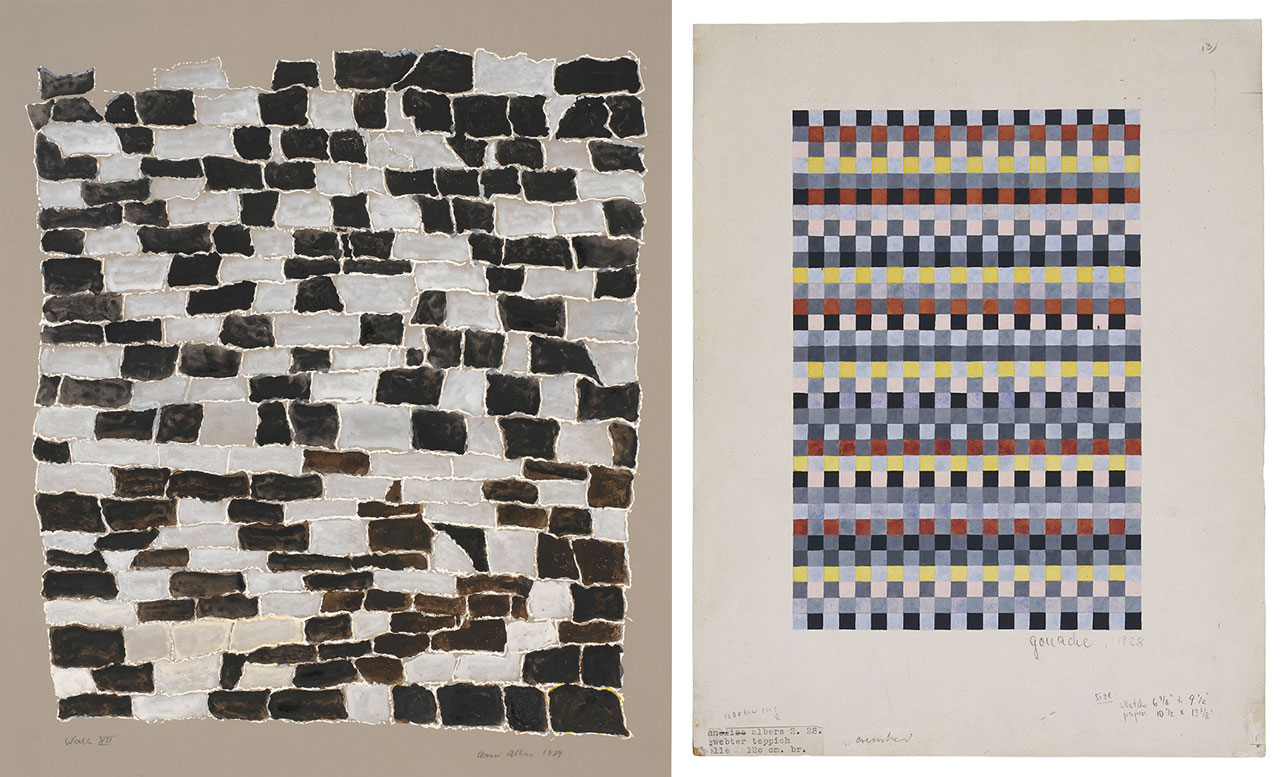ART-TRIBUTE:Weaving and other Practices…Anni Albers
 We continue our Tribute with οne of the Bauhaus’s most distinguished artists and a key figure at Black Mountain College, Anni Albers (12/6/1899-9/5/1994), she was one of the most important abstract artists of the twentieth century who inspired the reconsideration of fabrics as an art form, both in their functional roles and as wallhangings.
We continue our Tribute with οne of the Bauhaus’s most distinguished artists and a key figure at Black Mountain College, Anni Albers (12/6/1899-9/5/1994), she was one of the most important abstract artists of the twentieth century who inspired the reconsideration of fabrics as an art form, both in their functional roles and as wallhangings.
By Efi Michalarou
 The life of Anni Albers was marked by an intimate relationship with the materials and mediums that guided her work. Best known for her pioneering role in the field of Fiber Art, her innovative treatment of warp and weft, and her constant quest for new patterns and uses of fabric, Albers was instrumental in redefining the role of the artist as a designer. Her art was inspired by pre-Columbian arts and modern industry, and transcended conventional notions of craftsmanship and gender-specific labor. Anni Albers studied at the avant-garde Bauhaus in Weimar, where she met her husband, Josef Albers. Accepted as a student in 1922, she eventually became director of the school’s weaving workshop in 1931. After the institution was closed by the Nazi party in 1933, the Albers’s moved to North Carolina, where they were both hired to teach at a free-form school that would become a benchmark of modern American art, Black Mountain College. There Anni Albers continued to combine her educational activity with artistic experimentation, while also authoring texts that are now considered to be seminal in the history of contemporary textile art. After showing her wall hangings and pictorial weavings in numerous solo exhibitions (MoMA and other American museums between 1949 and 1953, and at the Massachusetts Institute of Technology in 1959), in 1963 Albers began to explore different techniques and processes in printmaking. Albers discovered a new field of investigation in the wide range of printing practices, and by the late 1960s she had abandoned weaving altogether to focus on this new interest. Screenprints, etchings, lithographs, and offset prints gave the artist a new means of developing visual concepts that had already surfaced in many preparatory drawings for earlier fiber pieces. In printmaking, she found the ideal vehicle for testing new compositional patterns and exploring their almost infinite variations. In the following decades, and until the end of her career, Anni Albers collaborated with various textile manufacturing companies and workshops in an attempt to make her designs available to a larger number of people, thus reaffirming her commitment to the guiding principle of the Bauhaus: to view art and design as a single field, and produce prototypes that would facilitate an egalitarian distribution of artistic forms.
The life of Anni Albers was marked by an intimate relationship with the materials and mediums that guided her work. Best known for her pioneering role in the field of Fiber Art, her innovative treatment of warp and weft, and her constant quest for new patterns and uses of fabric, Albers was instrumental in redefining the role of the artist as a designer. Her art was inspired by pre-Columbian arts and modern industry, and transcended conventional notions of craftsmanship and gender-specific labor. Anni Albers studied at the avant-garde Bauhaus in Weimar, where she met her husband, Josef Albers. Accepted as a student in 1922, she eventually became director of the school’s weaving workshop in 1931. After the institution was closed by the Nazi party in 1933, the Albers’s moved to North Carolina, where they were both hired to teach at a free-form school that would become a benchmark of modern American art, Black Mountain College. There Anni Albers continued to combine her educational activity with artistic experimentation, while also authoring texts that are now considered to be seminal in the history of contemporary textile art. After showing her wall hangings and pictorial weavings in numerous solo exhibitions (MoMA and other American museums between 1949 and 1953, and at the Massachusetts Institute of Technology in 1959), in 1963 Albers began to explore different techniques and processes in printmaking. Albers discovered a new field of investigation in the wide range of printing practices, and by the late 1960s she had abandoned weaving altogether to focus on this new interest. Screenprints, etchings, lithographs, and offset prints gave the artist a new means of developing visual concepts that had already surfaced in many preparatory drawings for earlier fiber pieces. In printmaking, she found the ideal vehicle for testing new compositional patterns and exploring their almost infinite variations. In the following decades, and until the end of her career, Anni Albers collaborated with various textile manufacturing companies and workshops in an attempt to make her designs available to a larger number of people, thus reaffirming her commitment to the guiding principle of the Bauhaus: to view art and design as a single field, and produce prototypes that would facilitate an egalitarian distribution of artistic forms. 